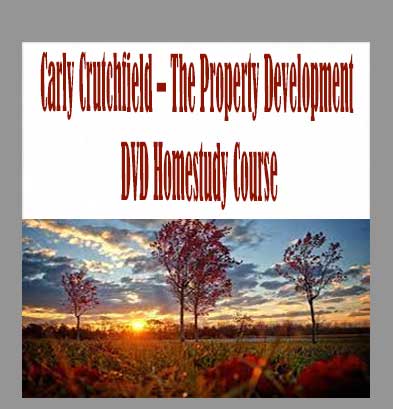Description
Involving Children in Child Protection Casework with Andrew Turnell download , Involving Children in Child Protection Casework with Andrew Turnell review , Involving Children in Child Protection Casework with Andrew Turnell free
Involving Children in Child Protection Casework with Andrew Turnell
Giving children a voice in safety planning after family violence can be tricky terrain for social workers. Andrew Turnell uses a wizard, a fairy, and three houses and gets astonishing results.
Dr. Andrew Turnell, best known for creating the Signs of Safety with Steve Edwards in the 1990s, presents a useful and practical system for including children in safety planning following violence and neglect in the home.
Safety planning with the Signs of Safety focuses on four questions:
What are we worried about?
What’s working well?
What needs to happen?
What is the risk assessment for the child’s safety at this time (on a 0-10 scale)?
In this video, Dr. Turnell shows how to ask the first three questions in a manner that allows children to open up and talk about their concerns and their hopes for their family.
Utilizing the imagery of “three houses,” and borrowing from Maori culture, he describes the process of having even very young children draw a “house of worries,” a “house of good things,” and a “house of dreams.” In each house the child draws what they aren’t always able to say. The social worker’s job is to ask questions supporting the child throughout the process. Even the coached child, or the child who has been told to remain silent, is still engageable through this process as the focus is not fully on the negatives and worries, but also on what is already going well. It is recommended that the social worker takes the caregivers through this process prior to meeting with the child in order to decrease the family’s resistance.
Many social workers have expressed that the “breakthrough” moment with some very hard-to-connect-with families comes from sharing the child’s drawings—with their permission, of course—with the parents. The “three houses” tool gives the parents a glimpse into how their behavior is affecting their children—and this is often a strong motivating factor for change.
Turnell works toward the same results using the “fairy and the wizard” tools. Both help connect with the child in playful and developmentally appropriate ways. This way everyone can be involved in what the child is feeling and thinking, which leads to better safety planning as well as deeper empathy within the family.
In Depth
Getting children involved in safety planning—especially younger children—has always presented a challenge to social workers. The focus is usually on shifting the negative behaviors of the caregivers, whether this is abuse or neglect of the children. While children are referred to therapists it is often the case that social workers and caregivers are the ones who create and sustain the safety plan.
Turnell feels that getting the children’s input is crucial and provides a concrete method for engaging with children and obtaining needed information that easily answers the three questions of: What are we worried about? What’s working well and What needs to happen?
An in-depth case example is provided showing the step-by-step work that a social worker does to understand a nine-year-old’s world. Following this, Turnell shows how it leads to a difficult and tearful family meeting that eventually moves toward greater safety in the home.
By watching this video you will:
- Understand why it is important to have the child be involved in the safety planning for the family.
- Understand the basic structure of the Three Houses, Wizard, and Fairy tools and how to use them to help children express their concerns and wishes.
- Understand how to use these tools in family meetings and in court to make a concrete case for whether the child is safe in the home.
Specs
Length of video: 0:46:49
English subtitles available
Bios
Andrew is an independent social worker, brief family therapist and child protection consultant from Perth, Western Australia. As well as international consultancy and teaching work, Andrew maintains a clinical practice working solely with families where child maltreatment has occurred or is suspected but the parents deny responsibility. Andrew has published extensively on the subjects of brief therapy and child protection, including his most well-known works: Signs of Safety: A Solution and Safety Oriented Approach to Child Protection Casework, Working with ‘Denied’ Child Abuse: The Resolutions Approach. Andrew is currently preparing his third book, Building Safety in Child Protection Practice: Working with a Strengths and Solution Focus in a Risk Environment.
In 2007, Andrew completed his PhD at Curtin University which focused on practitioner and service recipient-defined constructive child protection practice.
Andrew regularly gives lectures and workshops in Australia, Europe, North America, Japan and New Zealand. Andrew is currently employed by statutory protection organisations in New Zealand, England, The Netherlands, Canada, the USA and Western Australia to provide ongoing support, supervision and consultancy in system-wide implementations of the Signs of Safety approach.
Frequently Asked Questions:
- Innovative Business Model:
- Embrace the reality of a genuine business! Our approach involves forming a group buy, where we collectively share the costs among members. Using these funds, we purchase sought-after courses from sale pages and make them accessible to individuals facing financial constraints. Despite potential reservations from the authors, our customers appreciate the affordability and accessibility we provide.
- The Legal Landscape: Yes and No:
- The legality of our operations falls into a gray area. While we lack explicit approval from the course authors for resale, there’s a technicality at play. When procuring the course, the author didn’t specify any restrictions on resale. This legal nuance presents both an opportunity for us and a boon for those seeking budget-friendly access.
- Quality Assurance: Unveiling the Real Deal:
- Delving into the heart of the matter – quality. Acquiring the course directly from the sale page ensures that all documents and materials are identical to those obtained through conventional means. However, our differentiator lies in going beyond personal study; we take an extra step by reselling. It’s important to note that we are not the official course providers, meaning certain premium services aren’t included in our package:
- No coaching calls or scheduled sessions with the author.
- No access to the author’s private Facebook group or web portal.
- No entry to the author’s exclusive membership forum.
- No direct email support from the author or their team.
We operate independently, aiming to bridge the affordability gap without the additional services offered by official course channels. Your understanding of our unique approach is greatly appreciated.
- Delving into the heart of the matter – quality. Acquiring the course directly from the sale page ensures that all documents and materials are identical to those obtained through conventional means. However, our differentiator lies in going beyond personal study; we take an extra step by reselling. It’s important to note that we are not the official course providers, meaning certain premium services aren’t included in our package:
Refund is acceptable:
- Firstly, item is not as explained
- Secondly, Item do not work the way it should.
- Thirdly, and most importantly, support extension can not be used.
Thank you for choosing us! We’re so happy that you feel comfortable enough with us to forward your business here.








Reviews
There are no reviews yet.